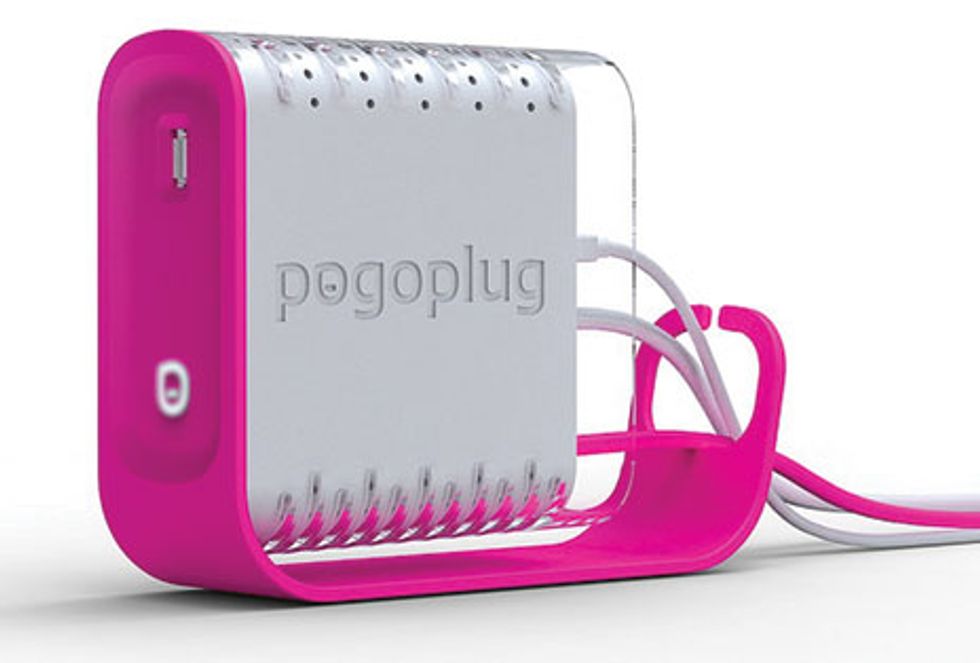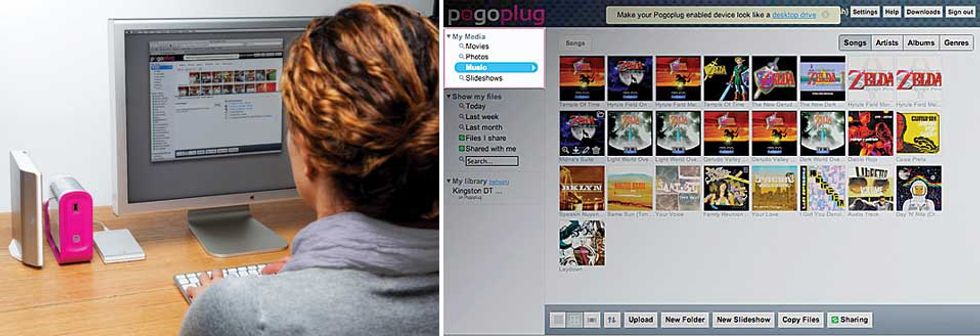As wireless Internet connectivity gets better, cloud storage—storing your data ”out there,” on Internet servers—seems more reasonable. But which cloud? It seems risky to store all your personal information on someone else’s server. The company could go bankrupt, get hacked, or leak your data through sheer incompetence. Then there’s the expense, usually in the form of a monthly fee. Meanwhile, storage drives are cheap, and home networking is easy. Why not set up your own cloud?
Cloud Engines, a 2007 start-up in San Francisco, has come up with a remarkably simple way to do just that. Its Pogoplug 2, a box about the size of a Wi-Fi router, connects to your home network with an included Ethernet cable. Plug one or more storage drives into its four USB ports, register your Pogoplug on the company’s Web site, and you’re now officially running a file server. It’s that easy.
You can access the drives via your Web browser or with an application that runs on Windows or OS X. Even better, there’s an iPhone app. By default, files are accessible only to you, but you can give anyone permission to read, and also write, any file or folder. You can also set up the Pogoplug to back up the computers on your home network just by specifying the folders. When files in those folders change, Pogoplug copies them.
If you can access your data from anywhere, can others as well? They may be able to if you don’t change the password for the root account, which by default is the same for every Pogoplug. Anyone comfortable with a Unix terminal interface and a log-in utility like SSH could connect and gain root access, if the Pogoplug has a routable IP address or if it’s on an accessible wireless network. (Cloud Engines says that SSH will be turned off by default in an upcoming software update.) You can easily change the password, but not via the Web page or applications: You, too, need to be comfortable with a Unix terminal interface. Changing the Pogoplug’s root password from its settings Web page is a sorely needed option.
At least you don’t have to worry about accessing your device if Cloud Engines goes out of business. A copy of the Pogoplug’s source code is in an escrow account, to become open source in that event.
The Pogoplug does more than simple file sharing. You can be on the other side of the planet and stream any songs, photos, and videos that were copied to the device (so long as the videos aren’t encoded with copy protection). To be sure, the music-playing interface is noticeably bare bones if you’re used to the power and flexibility of iTunes. And for video, your outbound bandwidth from home needs to be excellent, or streaming will be unacceptably slow. My home DSL connection in Massachusetts wasn’t up to the task. I was able to watch a movie after using some included software that reprocesses video into a more streaming-friendly version, but it takes about a day to process a standard-length motion picture. Pogoplug does much better with photos—the included software lets you quickly create slideshows and share them with anyone.
Strictly speaking, the Pogoplug isn’t a cloud—at least, not in the sense that if your house burned down your data would be safely in the ether. But if you need to access your data from anywhere, the Pogoplug is about as easy as it gets. This is a file server you could direct your parents to, if you have files you need to send them. In fact, this is a file server your parents could run themselves.
This article originally appeared in print as "Your Very Own Cloud."
About the Author
Harry Teasley has been developing video games professionally for nearly 20 years, working on such blockbuster games as Half-Life and Halo. He is a longtime contributor to Spectrum’s blogs and reviews products that interest him.


